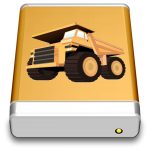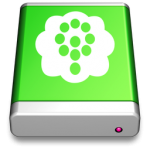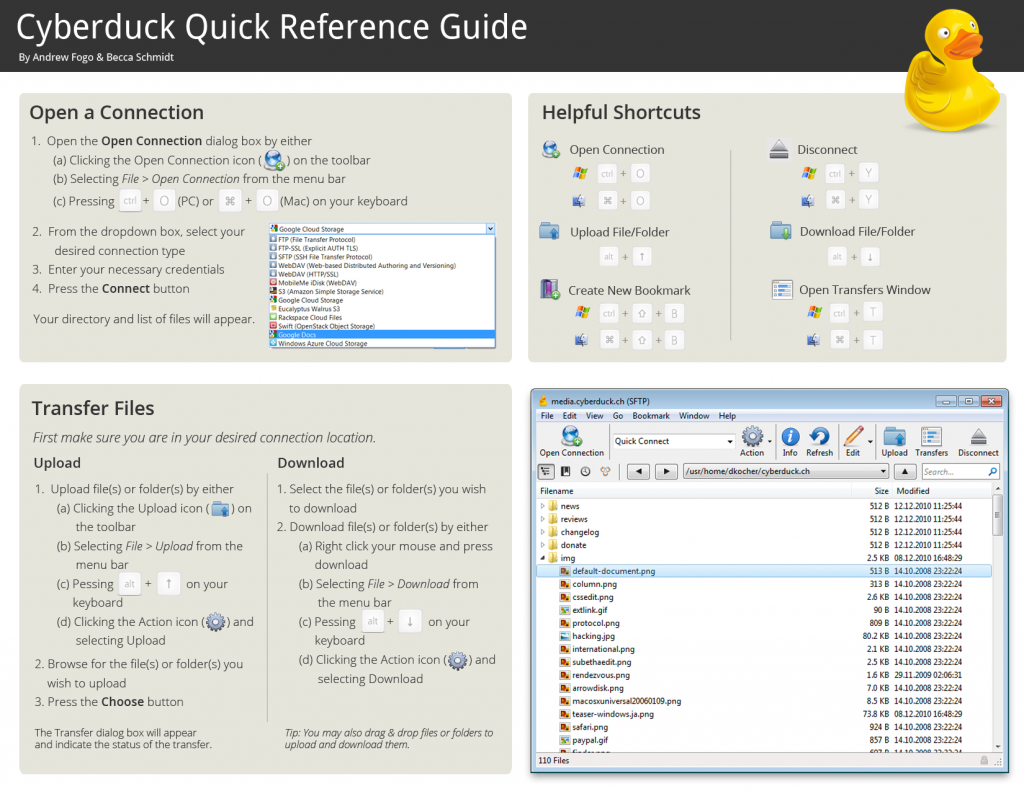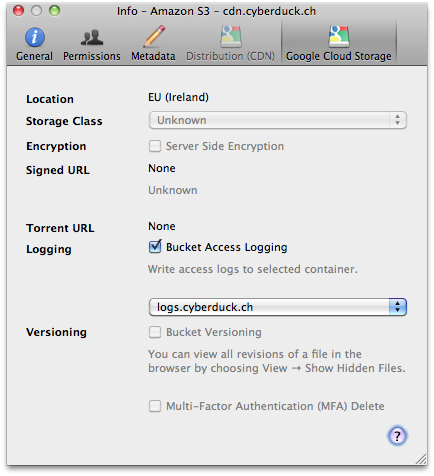(Cross posted from Qloudstat)
If you already use Cyberduck to configure access logging for CloudFront distributions, S3 buckets or containers in Rackspace Cloudfiles, getting reports in Qloudstat just got a lot easier with the new Read Access for Qloudstat checkbox in the Info panel tab for CDN or S3 buckets. For Amazon S3 buckets or CloudFront distributions, this will create a dedicated IAM user with a read only IAM policy for Qloudstat to fetch log files. Unchecking the Read Access for Qloudstat checkbox will remove the IAM user again revoking all access for Qloudstat. When enabled, a clickable link is displayed that redirects to Qloudstat to confirm the new setup.
 Mountain Duck
Mountain Duck CLI
CLI












